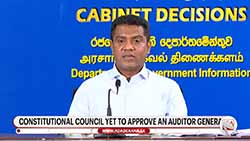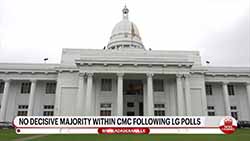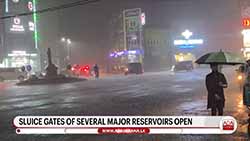ETCA: The Strive Towards Rejuvenated Indo-Lanka Trade
August 11, 2016 09:49 am
By Shamila Naleer
Much debate has flared regarding the ETCA between the neighboring countries of India and Sri Lanka. Nevertheless, assumed conspiracies have taken the spotlight on several occasions and Sri Lankans do not appear to be very keen at the prospect of the arrangement that is to be signed.
Lanka and Trade

Lanka, like countless other nations, is also a member of trade arrangements. Bringing Indo-Lanka trade rapports into the limelight, let us turn our attention to the India-Sri Lanka Free Trade Agreement (ISFTA) which was signed in December 1998 and came into effect in March 2000.
However, it has been assumed by many that the agreement is, de facto, veritably in favor of India. In 2014, it was recorded that Lanka’s export volume to India amounted to over US$ 700 million (6.49% of total exports) while imports from India took a figure of almost US$ 4 billion (20.67% of total imports).
The CEPA Debacle
a) What Is CEPA?

Negotiations for a CEPA began more than a decade ago in February 2005 and such discussions continued until July 2008, following thirteen long and strenuous rounds. As Minister of Industry and Commerce, Rishard Bathiudeen, commented in 2010, the CEPA was supposedly aimed at improving the bilateral trade between Lanka and India and would serve as an extension to the Indo-Sri Lanka FTA which was currently in place.
Experts from both countries had gone through the proposed clauses with utmost care. The issues brought up by the pending agreement had been thoroughly discussed in academic seminars and trade organizations. The then minister for international trade and industrial development, G.L.Peiris had advocated the CEPA, alongside the Central Bank and the Institute of Policy Studies who also wrote in support of the agreement.
However, the agreement was not signed in 2008 due to particular concerns expressed by native industrialists as well as the anticipated move towards the defeat of the LTTE and the arrangement seemed to be lost in oblivion.
In addition, according to Executive President of the Institute of Policy Studies, Saman Kelegama’s published statement, he said that “based on the recommendations of the Joint Study Group (JSG) report, it was decided to include trade in services, investment and economic cooperation, along with further liberalization of the goods sector, under the ambit of a CEPA.”
The JSG report additionally included that the CEPA would have four components;
- The existing ISFTA would be broadened to include more goods, and deepened to improve market access through trade facilitation and removal of non-tariff barriers.
- An agreement would be entered into regarding trade in services. The JSG recommended that the two nations develop methods to lower barriers to movement of business people and professional qualifications.
- CEPA would include measures for promotion of investment in the two nations and it was suggested that administrative and regulatory constraints be removed to promote bilateral investment flows that, in turn, would maximize mutual benefits of economic integration.
- CEPA will include measures for enhanced economic cooperation in areas that are, thus far, inadequately explored. Such areas include transportation, infrastructure, and education.etc.
b) Arguments For and Against CEPA

Kelegama stated that critics expressed their trepidations based on two extensive concerns. One; the inclusion of trade in services caused quite a stir, precisely because of the free movement of natural persons. Many Lankans understood this context as a step towards the free movement of labor between the two countries.
On that note, a website named “CEPA-Epa (සීපා එපා)” remarked that CEPA would allow Indians to set up businesses in Sri Lanka, bringing their native employees and even their families down to our shores. Since there are an extremely vast number of unemployed Indians, they would ultimately crowd out the job industry and Lankans will not be left with employment opportunities.
Nonetheless, Kelegama asserted that critics failed to take into account the fact that like the FTA, the CEPA has taken the economic asymmetry between the two countries into account, and hence granted special and differential treatment to Lanka. This declaration was an echo of what Indian Member of Parliament Shashi Tharoor said back in 2010. Moreover, the CEPA services agreement was based on a positive list framework, where the contracting countries exchange request lists for the liberalization of a specific sector. Thereafter, each country chooses to make an offer which is in line with their complacency levels and developmental interests. During discussions with stakeholders, such requests were made for ship repairing and the IT sector in Sri Lanka.
Secondly; shortcomings in the FTA should be addressed before moving on to a CEPA. Kelegama mentioned that such concerns were made based on minute understanding of the agreement. Given that trade in goods and services are correlative and also share close ties to investment, the negotiation teams of both nations recognized that all barriers to economic integration between the two should be dealt with in an expansive framework that consisted of the three correlated topics. Both Mutual Recognition Agreements and Memorandums of Agreement were to be signed covering broad subject areas. Ergo, CEPA was conferred with the very objective of addressing the flaws in the FTA.
c) CEPA Meets Its End?
Following the long-awaited end of a nerve-wracking civil war and as the Rajapaksa regime settled into its second term, India began egging the Lankan government towards acknowledging the CEPA once more, whilst arguing that it is beneficial to our country as well. At this nudge, the Lankan lobby against the CEPA counteracted the encouragement by saying that it would quite contrarily hurt the local economy.
Meanwhile, India began to taste the sour discretions Lanka was emanating. Indian media reported in 2010 that several professionals protested against India’s attempt to “thrust” CEPA on Lanka and that the demonstrators supposedly encouraged Former President Rajapaksa not to give in to Indian pressure. Past Indian MP, Shashi Tharoor, believed that the focal criticism against the CEPA was due to the unawareness of what the draft contained. He said that the arrangement has to be compared with the ISFTA which, he added, was extremely beneficial to both countries.
Likewise, deeming that vulnerability meant that India was indirectly given the power to have its say on Lankan political matters, Indian officials said that a “fear psychosis” of overdependence on the Indian market had emerged amidst certain Lankan quarters. On the other hand, Sri Lanka had listed demands from India in terms of barter deals and Tariff Free Quota Free (TFQF) access for its textiles, to which India did not agree.

In March 2015, the then Central Bank Governor, Arjuna Mahendran said that Sri Lankan industries are now agile and competently positioned to take on competition from Indian counterparts subsequent to the end of the war. “We want to be in a situation where Lankans and Indians can travel to each other’s countries, engage in business and do any sort of activity without any hindrance. It should be as if they are doing it in their own country.” He claimed such an environment would lead to augmented economic activity, weighed against the present situation where there were “many barriers to economic interactions.”

Last December seemingly brought about somewhat of a death note of the CEPA. PM Ranil Wickremasinghe informed the parliament that the government will not sign the CEPA, BUT will enter into an Economic/ Technical pact with India (cue the uproars and protests).
The Dawn of the ETCA and the Protests that Come Along with It
The Ceylon Chamber of Commerce welcomed the ETCA and believed that such agreements are an important tool in deepening trade and investment opportunities for domestic businesses. The think tank reaffirmed their support towards the arrangement which “widens and deepens our economic engagement with India”.
Keeping up with expectations, protests followed the introduction of the fetus agreement. Even at the Jana Satana Paada Yathra, which took place a few days ago, several demonstrators displayed written signs of protest against ETCA and cries of objection were also heard. MP Wimal Weerawansa additionally affirmed that should the government sign the ETCA, the Joint Opposition would walk the streets again and that “the next time” they “won’t just issue warnings, but together, will away chase the government”.
- GMOA and the ETCA

Government Medical Officers’ Association (GMOA) has widely shown their immense disapproval of the ETCA on many counts.
When the Prime Minister announced that the Indo-Lanka ETCA would be taken on, he also condemned the GMOA in the process. He said the association accused the state of attempting to sign the CEPA under a different name and that as a responsible trade organization it was incorrect to mislead its members and the public by making such false as well as baseless statements. Wickremasinghe added that the government has informed all pertinent parties regarding the proposed pact with India.
The Prime Minister also went on to say that Minister Malik Samarawickrama conferred with trade unions regarding the matter and the representatives of the GMOA who participated in those discussions expressed their appreciation to the government for acting in a transparent manner. Wickramasinghe criticized that, however, they subsequently narrate a different tale to the media; they do not say that representatives of trade institutes are in the committee preparing the agreement and that the new pact is different to the CEPA. He also accused the GMOA of spouting lies instead of the truth after leaving the discussions.
Several months ago, the association supposedly released scanned copies of the drafted ETCA framework document. However, please note that this not the official framework, but a mere alleged draft. The following extracts from the putative draft are worth a second glance;
“The objectives of this agreement are:
- To strengthen and advance the economic, trade, investment and technology cooperation between the two parties.
- To promote further liberalization of trade in goods, liberalizing trade in services between the two parties, and gradually establish fair, transparent and facilitative trading, investment and investment protection mechanisms.
- To expand areas of economic cooperation and establish a cooperation mechanism.”
The GMOA also opposed the government’s bid to sign the ETCA based on the absence of an unassailable regulatory mechanism in Lanka which they claim would lead to a massive influx of Indian doctors, looming over prospects of local medical professionals.
- Scattered Viewpoints

Sri Lankan officials described the rampant controversy in the island over the Lankan government’s intention to sign the ETCA with India as “premature”. Deputy Minister of Foreign Affairs, Harsha de Silva, announced that while there is no formal document yet, some reservations which had overwhelmed the ISFTA are anticipated to be addressed in the ETCA. Among these are the Non-Tariff Barriers in India, the need for an agreement on Mutual Recognition of Standards and the need to lift restrictions on ports of entry. De Silva also said that the state will have consultations with local stakeholders before finalizing a draft ETCA.
PM Wickremasinghe declared to the parliament in February that citizens need not cower before the ETCA as it would, in reality, grant Lankans employment prospects. Withal, he said that “apart from very few, there are only businesses that flourished in the face of foreign and local competition” and that the government was acting upon the interests of the country and for its future. “We can no longer stay like frogs in a well. We have to move forward quickly with the rest of the world which is travelling at a fast pace”.

Ex-President Rajapaksa also contributed his thoughts on the impending agreement in March, urging the government to take a phased approach to entering to an ETCA with India. He also insisted that the government should table the agreement in parliament and consider the views of trade chambers, professional associations and the general public before making a definitive verdict.
Earlier today, State Minister of National Policy and Economic Affairs, Niroshan Perera, echoed what many other parliamentarians and officials have been saying in the recent past. He stated that the government would sign the agreement with India, only after presenting the content of the ETCA to the parliament and to the public. Further, Perera mentioned that like the agreement with our neighbor, the government hopes to commence such beneficial arrangements with the nations of China and Singapore.
In Conclusion….

Trade agreements, in general, are almost always beneficial to the contracting countries as they enjoy lowered barriers to trade. According to statistics from the Department of Commerce, under the ISFTA, Sri Lankan exports gradually increased from US$16 million to US$68 million between the years 2000 and 2015. Meanwhile, imports from India fluctuated from US$9 million to US$6 million. From this, we can gather that the proposed ETCA may actually be beneficial to our island.
Nonetheless, as many have emphasized, Sri Lankans do need access to the composition of the arrangement as it is necessary for the general public to be well informed on what to anticipate in line with the pact. Moreover, when making such an agreement, the government needs to carefully tread these waters.













